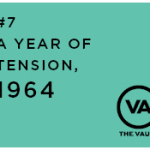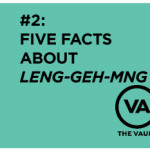A lot of factors go into the decline of languages in a country, but here are some events in Singapore history that led to the diminished use of Chinese dialects among the Chinese population.
When Singapore separated from Malaysia in 1965, the various racial groups were unsure of their standing in the newly-minted nation. The Chinese Chamber of Commerce, in particular, campaigned for Mandarin to be declared an official language:
Moving the resolution to submit the memorandum, the Chamber’s treasurer, Mr. Kheng Chin Hock, stressed the fact that Chinese was being used by more than 80 per cent of the population in Singapore.
Source: Chinese as one of the official languages. In Straits Times (1 October 1965), http://tinyurl.com/zg52pju
To defuse racial tensions, then-Prime Minster Lee Kuan Yew was quick to respond by declaring all four major languages – Malay, Mandarin, Tamil and English – as official and equal.
Mr. Lee ruled out all possibilities of changing the language positions. The new Constitution would simply re-state the status quo of the four official languages, with Malay as the common and national language.
Any attempt by a few people to exaggerate the Chinese majority to justify their agitation would jeopardise the struggle of the Chinese in Malaysia for a fair place for their language, Mr. Lee warned.
Source: Lee’s warning to language agitators. In Straits Times (2 October 1965), http://tinyurl.com/h8x4zu6
And so it was written in the Singapore Constitution.
But there was more for the languages in Singapore. PM Lee envisioned Singaporeans speaking two languages – English, and their ‘mother tongue’.
A people fluent in English thus in step with the world of science and technology – but also steeped in Asian values of thrift, discipline and industry that come with knowledge of their mother tongue.
Source: Lee’s Ideal Singaporean by Leslie Fong, Ngiam Tong Hai & Lee Kim Chew. In The Straits Times (12 February 1978), http://tinyurl.com/zbjhswm
PM Lee was adamant that the Chinese population be bilingual in English and Mandarin, as envinced by his impassioned words:
From my observation, the monolingualist is more likely to be a language chauvinist and a bigot.
He only sees the world through one eye. He does not have binocular vision to see the world in depth, to realise that there are as rich, if not richer, worlds of human experience and knowledge, all expressed in beautiful words, elegantly, vividly and fluently in other languages.
Bilingualism gives a more balanced and rounded view of the world. The Chinese who reads and speaks Chinese has only a sketchy view of the reals history of the world outside China.
[…]If we are to modernise and industrialise, we must be bilingual.
Source: Bilingual policy will be fairly and equally implemented by Lee Kuan Yew. In The Straits Times (2 June 1978), http://tinyurl.com/zlm3h3v
The new government revamped the education system, introducing mandatory bilingual education for students in Singapore. Students had to learn English, as well as a ‘mother tongue’, a policy which is still in place today.
Our Mother Tongue Language (MTL) policy requires all students who are Singaporeans or Singapore Permanent Residents to study their respective official MTL: Chinese, Malay and Tamil.
Source: Mother Tongue Language Policy. Ministry of Education Singapore (18 April 2016), http://tinyurl.com/zsvj54a
For schooling children from the various Chinese dialect groups in Singapore, this meant that they all had to take up Mandarin.
But for the first two decades, the bilingual education policy saw little success as Chinese students struggled to learn two new languages. In a 1979 Report on the Ministry of Education, the study team, chaired by then-Deputy Prime Minister Goh Keng Swee, found that English and Mandarin were not used at home by 85% of schooling children, who continued to use dialect to communicate with family members.
In addition to revisions to the education system to help Chinese students learn Mandarin at various proficiencies, Mandarin was actively promoted among the Chinese population. In 1979, PM Lee launched the “Promote the Use of Mandarin” campaign.
[The campaign] is in response to recent government statements that the use of dialects, instead of Mandarin, is hampering the Republic’s bilingual educational policy for the Chinese, and overburdens the learning process of the young. […]Some of the slogans include “Make Mandarin the Common Tongue of Our Chinese Community” and “Speak Mandarin Instead of Dialects”.
Source: Lee to launch use Mandarin campaign. In Straits Times (7 September 1979), http://tinyurl.com/gnzvv4o
The Speak Mandarin campaign continues till this day as an annual event.
In over three decades of campaigning, and five decades since the introduction of bilingual education, dialect use among the Singapore Chinese population has fallen from 81.4% in 1980, to 12.2% in 2015.
| Language Spoken at Home Among Chinese Resident Population in Singapore | |||||
|---|---|---|---|---|---|
| Predominant Household Language | 1957 (%) | 1980 (%) | 2000 (%) | 2010 (%) | |
| English | 1.8 | 11.6 | 23 | 33 | |
| Mandarin | 0.1 | 10.2 | 35 | 47 | |
| Other Chinese Dialects | 97 | 81.4 | 30.7 | 19.2 | |
(Source: Singapore Department of Statistics)
By Daniel Teo
Published on 15 July 2016
The Vault: Dialects and Dialectics revisits two monologues by the late local theatre doyen Kuo Pao Kun: No Parking On Odd Days and The Coffin Is Too Big For The Hole. Nine Years Theatre’s artistic director Nelson Chia explores the cultural sentiments and grassroots sensibilities of these plays by staging them in Cantonese and Teochew respectively. Find out more here.
The Vault: Leng-Geh-Mng is a revisit of the first martial arts production in Singapore theatre of the same title by theatre-maker Zelda Tatiana Ng. Under her direction and alongside some of the original cast members, Leng-Geh-Mng is retold in the format of a radio play refreshed with the use of Chinese dialects. Find out more here.






